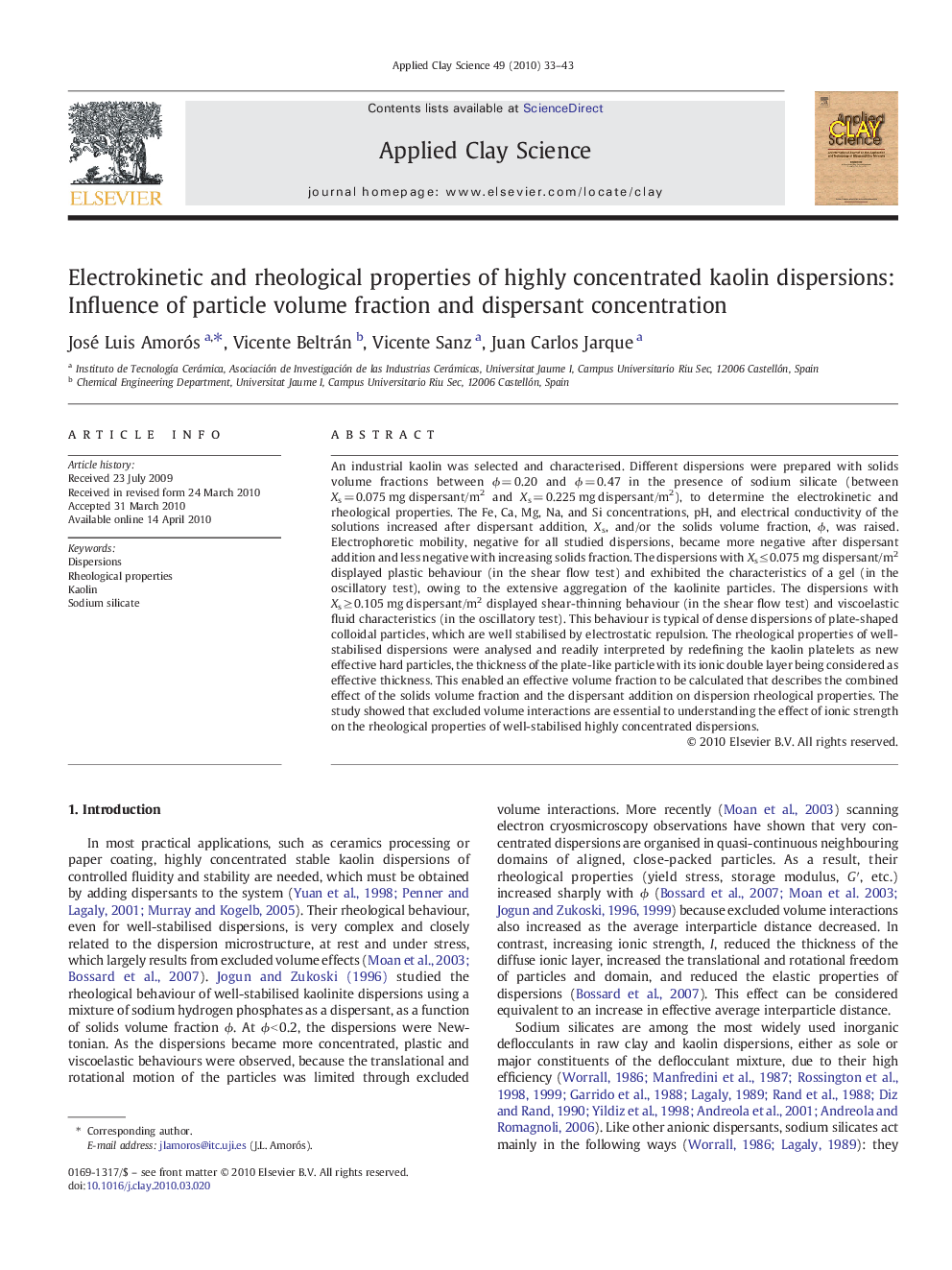| Article ID | Journal | Published Year | Pages | File Type |
|---|---|---|---|---|
| 1695921 | Applied Clay Science | 2010 | 11 Pages |
An industrial kaolin was selected and characterised. Different dispersions were prepared with solids volume fractions between ϕ = 0.20 and ϕ = 0.47 in the presence of sodium silicate (between Xs = 0.075 mg dispersant/m2 and Xs = 0.225 mg dispersant/m2), to determine the electrokinetic and rheological properties. The Fe, Ca, Mg, Na, and Si concentrations, pH, and electrical conductivity of the solutions increased after dispersant addition, Xs, and/or the solids volume fraction, ϕ, was raised. Electrophoretic mobility, negative for all studied dispersions, became more negative after dispersant addition and less negative with increasing solids fraction. The dispersions with Xs ≤ 0.075 mg dispersant/m2 displayed plastic behaviour (in the shear flow test) and exhibited the characteristics of a gel (in the oscillatory test), owing to the extensive aggregation of the kaolinite particles. The dispersions with Xs ≥ 0.105 mg dispersant/m2 displayed shear-thinning behaviour (in the shear flow test) and viscoelastic fluid characteristics (in the oscillatory test). This behaviour is typical of dense dispersions of plate-shaped colloidal particles, which are well stabilised by electrostatic repulsion. The rheological properties of well-stabilised dispersions were analysed and readily interpreted by redefining the kaolin platelets as new effective hard particles, the thickness of the plate-like particle with its ionic double layer being considered as effective thickness. This enabled an effective volume fraction to be calculated that describes the combined effect of the solids volume fraction and the dispersant addition on dispersion rheological properties. The study showed that excluded volume interactions are essential to understanding the effect of ionic strength on the rheological properties of well-stabilised highly concentrated dispersions.
